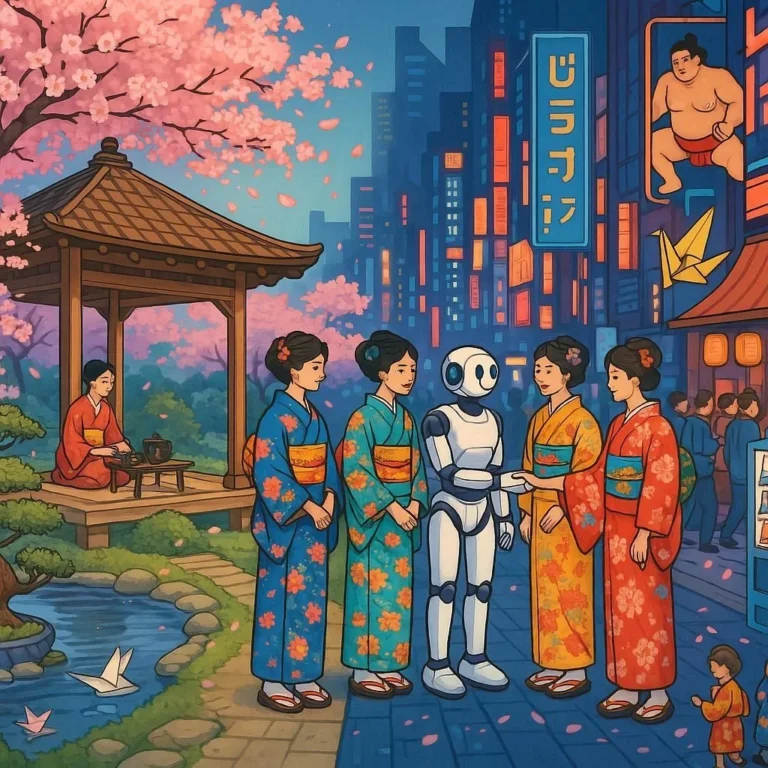511 views The Yamaguchi-gumi’s Pledge: Ceasing Internal Conflict Within Yakuza Factions
The Yamaguchi-gumi, Japan’s most formidable yakuza syndicate, has recently made headlines with a historic pledge to cease internal conflicts within its ranks. This unexpected announcement has sent shockwaves through both the underworld and the upper echelons of Japanese society. The Yamaguchi-gumi, with its labyrinthine hierarchy and rigid code of conduct, has long been a symbol of organized crime in Japan. However, internal power struggles and factional disputes have periodically threatened its stability. The decision to halt these conflicts represents a significant shift in strategy, signaling a potential new era for the organization.
In this blog post, we will delve into the background of the Yamaguchi-gumi, the reasons behind its internal conflicts, the specifics of the pledge, and the implications of this move for both the organization and the broader landscape of organized crime in Japan. Whether you are a seasoned observer of yakuza dynamics or simply curious about this enigmatic world, this post promises to shed light on a pivotal moment in the history of Japan’s criminal underworld.
The Yamaguchi-gumi: A Brief History
The Yamaguchi-gumi, founded in 1915 by Harukichi Yamaguchi, is the largest and most powerful yakuza syndicate in Japan, with an estimated membership of tens of thousands. Its name, which translates to “Yamaguchi Group,” reflects its origins in the port city of Kobe. Over the decades, the organization has expanded its influence across Japan, establishing a presence in every major city and diversifying its operations into legitimate businesses, real estate, construction, and entertainment.
Despite its vast reach, the Yamaguchi-gumi is known for its hierarchical structure, with the leader, or “oyabun,” holding absolute authority. This strict chain of command has historically been both a source of strength and a point of contention, as lower-ranking members often chafe against the centralized decision-making process.
The Roots of Internal Conflict
Internal conflicts within the Yamaguchi-gumi are not a new phenomenon. Like any large organization, especially one involved in illicit activities, the syndicate has faced power struggles, territorial disputes, and ideological differences. These conflicts have occasionally escalated into full-blown wars, as factions vie for control of lucrative territories and resources.
One of the most infamous internal conflicts in the Yamaguchi-gumi’s history occurred in the 1980s, when the organization was rocked by the “Yama-Ichi War,” a violent struggle between the main Yamaguchi-gumi faction and a splinter group known as the Ichiwa-kai. The conflict, which lasted for several years, resulted in numerous deaths and arrests, and ultimately weakened the organization’s grip on certain territories.
More recently, the Yamaguchi-gumi has faced challenges from within, particularly following the retirement of its long-serving leader, Tsukasa Shinobu, in 2021. The transition of power to a new leader, which is always a sensitive process in such organizations, was expected to trigger fresh tensions. However, the recent pledge to cease internal conflicts suggests a deliberate effort to avoid further fragmentation.
The Pledge: A New Era for the Yamaguchi-gumi?
The Yamaguchi-gumi’s pledge to cease internal conflicts was reportedly announced during a secret meeting of high-ranking members. According to sources close to the organization, the decision was motivated by a desire to restore unity and focus on external challenges, such as increased law enforcement pressure and competition from rival syndicates.
While the exact terms of the pledge are not publicly known, it is understood to include measures aimed at resolving disputes through mediation rather than violence. The leadership has also emphasized the need for greater transparency and accountability within the organization, with the goal of preventing the kind of power struggles that have plagued the group in the past.
This move is widely seen as an attempt to strengthen the Yamaguchi-gumi’s position in the face of a changing criminal landscape. In recent years, the organization has faced increased scrutiny from Japanese authorities, who have targeted its financial operations and key members. At the same time, the rise of other criminal groups, both domestically and internationally, has posed a threat to the Yamaguchi-gumi’s dominance.
Implications of the Pledge
The implications of the Yamaguchi-gumi’s pledge to cease internal conflicts are far-reaching and multifaceted. For the organization itself, the move represents an opportunity to consolidate power and redirect resources toward more strategic goals. By reducing infighting, the leadership can focus on expanding its influence, both legally and illegally, and responding to external threats more effectively.
From a broader perspective, the pledge could have significant consequences for the wider yakuza community. The Yamaguchi-gumi’s influence extends beyond its own ranks, and its actions often set the tone for other syndicates. If the organization is successful in maintaining internal stability, it could lead to a period of relative calm within the yakuza world, potentially reducing violence and competition among factions.
However, not everyone is optimistic about the prospects of the pledge. Skeptics point out that internal conflicts are deeply ingrained in the culture of the Yamaguchi-gumi and that resolving them will require more than just a verbal commitment. They argue that the organization’s hierarchical structure and the ambitions of its members make it inherently prone to power struggles and rivalries.
Additionally, there are questions about how the leadership plans to enforce the pledge. Given the decentralized nature of the Yamaguchi-gumi’s operations, with members spread across the country and involved in a wide range of activities, implementing and monitoring a cessation of internal conflicts will be a logistical challenge. The organization may need to establish new mechanisms for resolving disputes and ensuring compliance, which could prove difficult in practice.
Challenges Ahead
As the Yamaguchi-gumi seeks to implement its pledge and move beyond internal conflict, several challenges lie ahead. These include not only the practical difficulties of enforcing the agreement but also the broader social and economic factors that have contributed to the organization’s internal tensions over the years.
One of the most significant challenges will be managing the expectations and ambitions of its members. The Yamaguchi-gumi has historically attracted individuals who are driven by a desire for power, wealth, and status. While the leadership may be committed to reducing conflict, rank-and-file members may be less inclined to abandon their own ambitions, especially if they feel that the current structure is not serving their interests.
Another challenge is the changing nature of organized crime in Japan. The yakuza has long been a major player in the country’s criminal underworld, but its influence has been waning in recent years due to increased law enforcement efforts and the rise of other criminal groups. The Yamaguchi-gumi will need to adapt to these changes while also addressing its internal issues, a task that will require careful strategic planning and execution.
Finally, there is the issue of public perception. The yakuza has long been a subject of fascination and fear in Japanese society, and the Yamaguchi-gumi’s internal conflicts have only added to its notoriety. By pledging to cease these conflicts, the organization may be attempting to improve its public image and secure a more stable future. However, this will require a sustained effort to demonstrate that it is serious about change and that it is capable of governing itself effectively.
The Future of the Yamaguchi-gumi
The Yamaguchi-gumi’s pledge to cease internal conflicts marks a significant turning point in the history of Japan’s yakuza. While the road ahead will undoubtedly be fraught with challenges, the organization has an opportunity to redefine itself and chart a new course for the future.
If the leadership is successful in implementing the pledge, the Yamaguchi-gumi could emerge stronger and more unified than ever before. This would not only benefit the organization but also potentially stabilize the broader yakuza community, reducing violence and competition among factions. At the same time, it could pave the way for greater cooperation with other criminal groups and even legitimate businesses, further solidifying the organization’s position in the criminal underworld.
However, the success of the pledge is by no means guaranteed. The Yamaguchi-gumi’s internal conflicts are deeply ingrained in its culture and structure, and resolving them will require fundamental changes to how the organization operates. Additionally, the broader challenges facing the yakuza, such as increased law enforcement pressure and competition from other criminal groups, will continue to pose a threat to its stability and influence.
In the end, the Yamaguchi-gumi’s ability to cease internal conflict and move forward will depend on the commitment of its leadership and the willingness of its members to embrace change. Whether the organization is able to achieve its goals and secure a stable future remains to be seen, but one thing is certain: the pledge to end internal conflict is a bold step toward a new era for the Yamaguchi-gumi and the yakuza as a whole.
Conclusion
The Yamaguchi-gumi’s pledge to cease internal conflict within its ranks is a significant development in the history of Japan’s yakuza. While the challenges ahead are numerous, the organization has an opportunity to redefine itself and chart a new course for the future. Whether the pledge will lead to lasting stability and unity remains to be seen, but it is clear that this move marks a turning point in the history of one of the world’s most infamous criminal syndicates.







